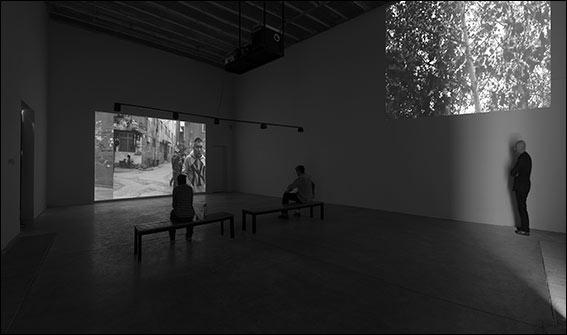|
‘scanning Caochandi—Caochangdi scanning’ |
|
Through the build-up of the installation and the position of the speakers, the visitor is tempted to take place on a bench in the middle of the exhibition room and thus becomes a part of the work as another added observer. The installation consists of two projected images. One is the above described main film, projected on the wall opposite the bench. The second image is projected high on a sidewall and shows us tree leaves, waving in sync with the back and forth rhythm of the main film. Above the bench in the middle of the room, five loudspeakers are hanged from the ceiling. Sounds from the main film are moving along this line of speakers. |

|
During a residential stay at the C-space gallery in Beijing, the Dutch artist Peter Bogers has documented the daily life at a local crossroad in Caochangdi, an urban village located in the Chaoyang District of northeast Beijing. The language-barrier in mind, Bogers has used his camera as a tool to communicate. He simply put it on a tripod and stood next to it for hours and hours, using this situation to get in contact with people passing by. The resulting recordings form the basis for a comprehensive audiovisual installation presented at a solo show in the C-Space gallery, situated in the heart of Caochangdi. All footage has been edited into a breathing rhythm; repeatedly playing forward and backward in time. It offers the viewer the possibility to closely study gradually developing daily situations in public space, all of them dealing with watching and being watched. |





|
Documentation-video: CLICK HERE |